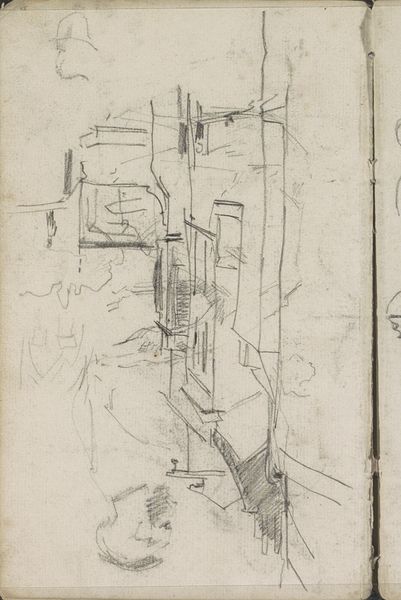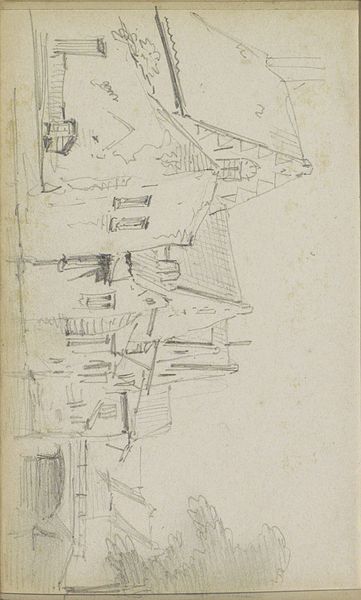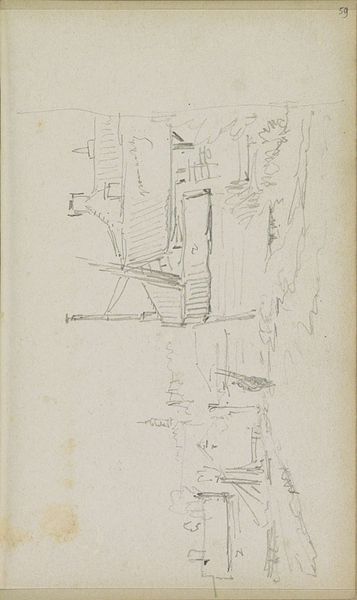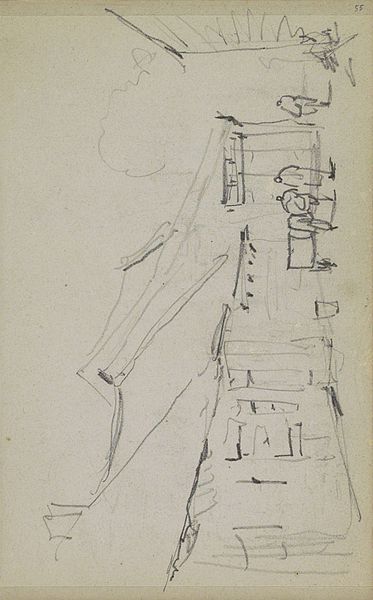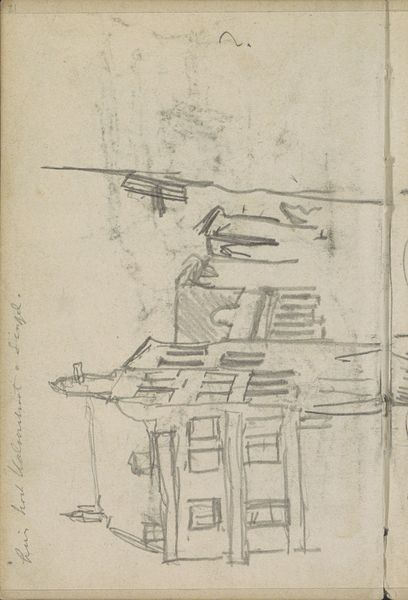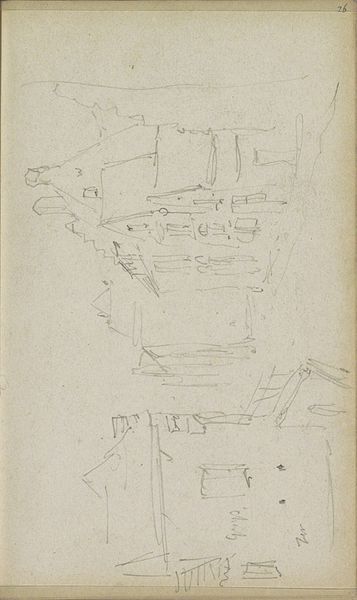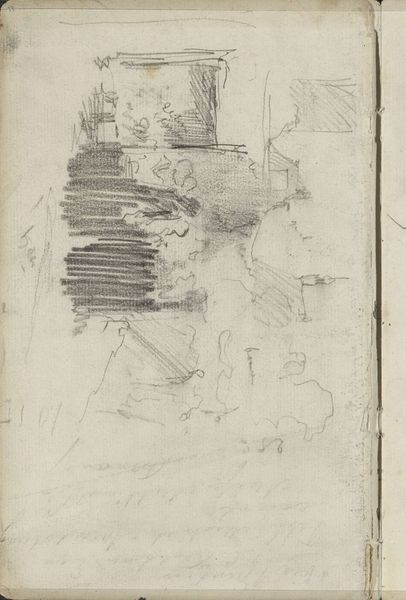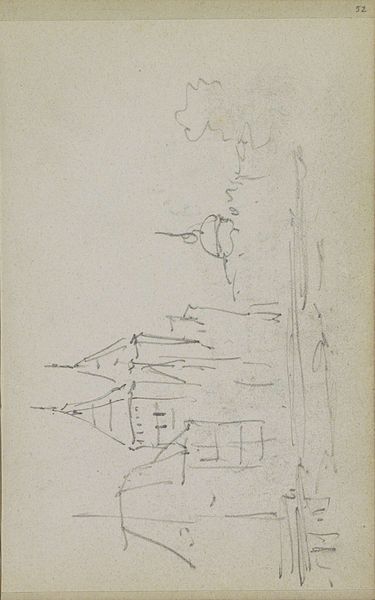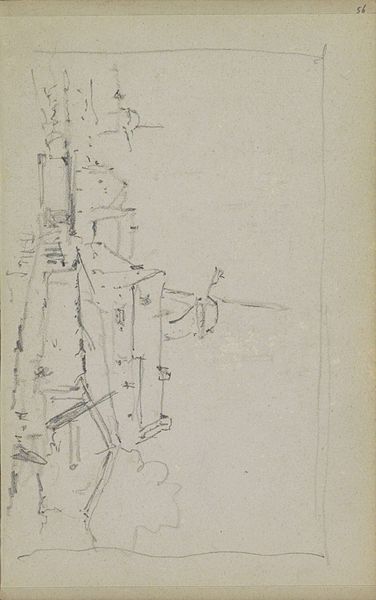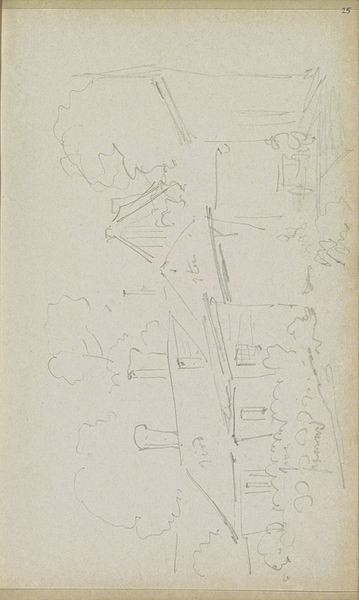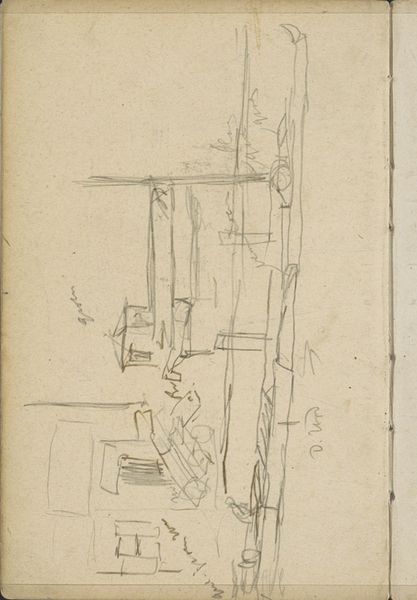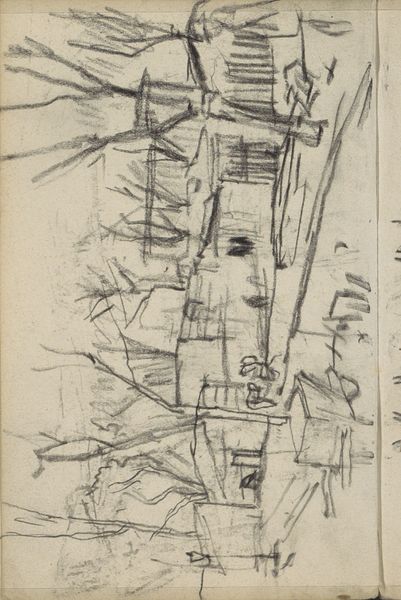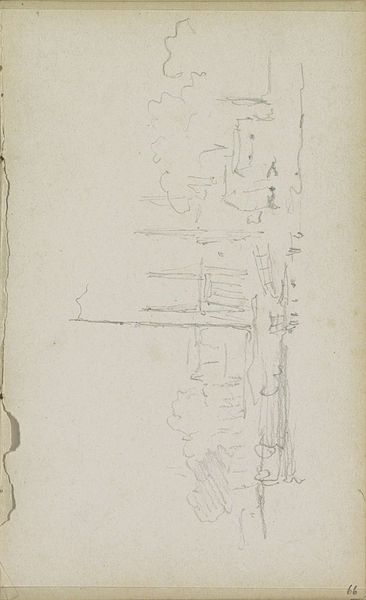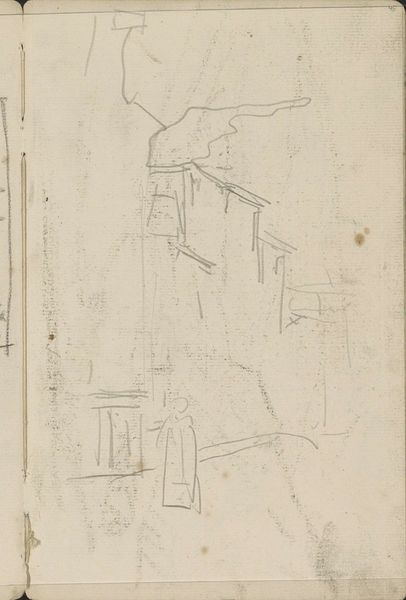
drawing, paper, pencil
#
drawing
#
toned paper
#
street-art
#
quirky sketch
#
impressionism
#
sketch book
#
incomplete sketchy
#
landscape
#
paper
#
personal sketchbook
#
idea generation sketch
#
sketchwork
#
pencil
#
line
#
sketchbook drawing
#
cityscape
#
storyboard and sketchbook work
#
sketchbook art
#
street
Copyright: Rijks Museum: Open Domain
Editor: This is "Gezicht op een straat in Rotterdam" by George Hendrik Breitner, made between 1880 and 1882. It's a pencil drawing on paper. It feels very raw and immediate, like a glimpse into a working sketchbook. How does this fit into the art world of the time? Curator: Breitner was very interested in capturing the energy of the modern city, and this sketch is a perfect example. Drawings like this reflect a shift away from idealized representations towards a more documentary style. Think of how photography was emerging at the same time; this shares that gritty realism. Where do you see that connection in the image itself? Editor: Well, it doesn't feel posed. It captures the everyday, mundane aspects of urban life that you wouldn't necessarily find in more traditional landscapes. Like it could be anywhere. Curator: Exactly. And consider who Breitner was. He moved among artistic circles interested in social realism, depicting ordinary people in their everyday environments. These weren't heroic portraits or grand historical scenes, but observations of modern urban existence. Do you think that changes our perspective? Editor: Absolutely. Knowing that it reflects an interest in everyday life definitely makes me see it differently. It humanizes it. I guess I just expected something from that time period to be a bit more polished. Curator: And that expectation comes from the established artistic norms that Breitner and others were actively challenging. They wanted to show life as it was lived, not as it was imagined to be. Think about how artistic institutions and academies at the time preferred idealized forms. Artists like Breitner were forging a new path, reflecting the social changes and realities of the industrial era. What does understanding that change for us today? Editor: It highlights the social and cultural context in which this artwork was produced. It moves the piece from something simple into an artifact of social commentary and evolving perspectives. Curator: Precisely. It helps us understand the changing role of art and the artist within society. It’s not just a street scene, it’s a document of a changing world.
Comments
No comments
Be the first to comment and join the conversation on the ultimate creative platform.
